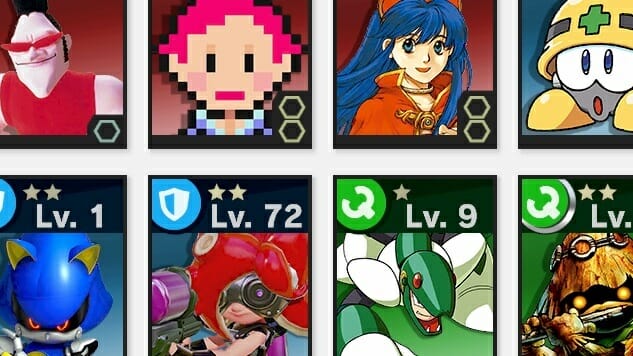From its start in 1999 Super Smash Bros. has weaponized the past. That first game on the Nintendo 64 threw Nintendo’s most recognizable characters into a chaotic free-for-all, letting players take debates over who would win a fight between Mario, Link, Samus and Pikachu from the playground to the TV. It turned nostalgia into open war, pitting our childhood heroes against one another in a lightning fast, over-the-top take on fighting games.
As Nintendo expanded Smash’s focus from the company’s most popular games to a broader appreciation of its historical output, it also went out of its way to inform Smash players of that history. From 2001’s Melee through 2014’s Wii U installment, Super Smash Bros. games made a point of noting when and where its characters first appeared. Even as hundreds of increasingly obscure characters started to appear in the game as trophies, there was still a brief caption for every one that offered a quick overview of their history. So if a character you’d never heard of appeared as a trophy—which was not at all unlikely by the time the Wii U game came out with over 700 trophies from more than 30 years worth of videogames—you’d be able to learn where they came from and also place them in context within Nintendo’s history.
Super Smash Bros. Ultimate might ditch the long-running trophy concept, but it still feasts upon Nintendo’s history, as well as that of some of the third-party games that are now a part of the Smash universe. Spirits have effectively replaced trophies as the game’s nod to the past, with over a thousand characters and items from different games appearing in Ultimate as unlockable buffs in the World of Light single-player mode, and also in the rotating battles on the Spirit Board. It’s the deepest range of historical references in the 20-year life of the Smash Bros. games, and a miniature museum of not just Nintendo works but a large swath of the entire Japanese videogame industry.
With this massive collection of spirits and the game’s extreme popularity, Smash Bros. Ultimate is uniquely poised to spread gaming history throughout multiple generations of players. And yet, other than saying what series a spirit is from, the game pretty much makes no attempt to explain any of this history. It inundates players with arcane references to not just Nintendo’s past, but select parts of Namco’s history, and Capcom’s, Konami’s, Square-Enix’s, and more. And then it provides almost no context for that history, and no clue of when a character first appeared and where.
I’m probably better positioned to recognize and understand all this information than most people who will pick up the new Smash. I’ve been playing Nintendo games since before the NES existed. Playing and fixating on videogames is literally my job—I’m getting paid to write this thing right this very second. And yet there’s so much I wish this game would tell me about the various characters who pop up as spirits. I can see which franchise they’re affiliated with, but which game did they first appear in? What year did that game come out? Is this the hero, the villain, a supporting character, or what? When Smash uses art from a box or arcade cabinet, it’d be good to see what the actual in-game character looks like. It’d be great to know which one of Nintendo’s internal design teams developed each game, and who oversaw that team. The videogame industry only cares about its history to the point that it can profit off it, and even a game built entirely around history and nostalgia—a game like Smash—does the bare minimum to educate the player about that history. And if older Smash games did the bare minimum—a sentence or two describing a character, with the name of the first game they appeared in, and sometimes the console that game could be played on—then Ultimate does even less than the bare minimum.
At least these references are still here. I’d rather have random unexplained appearances by characters that were in one game on the NES 33 years ago, and then have to go google their name to learn about them, than have Smash abandon its more-is-never-more-enough approach to history. Still, in a game so ridiculously overstuffed with content, and so focused on remembering the past, it’s weird to not include more information about that past.
Garrett Martin edits Paste’s games and comedy sections. He’s on Twitter at @grmartin.
